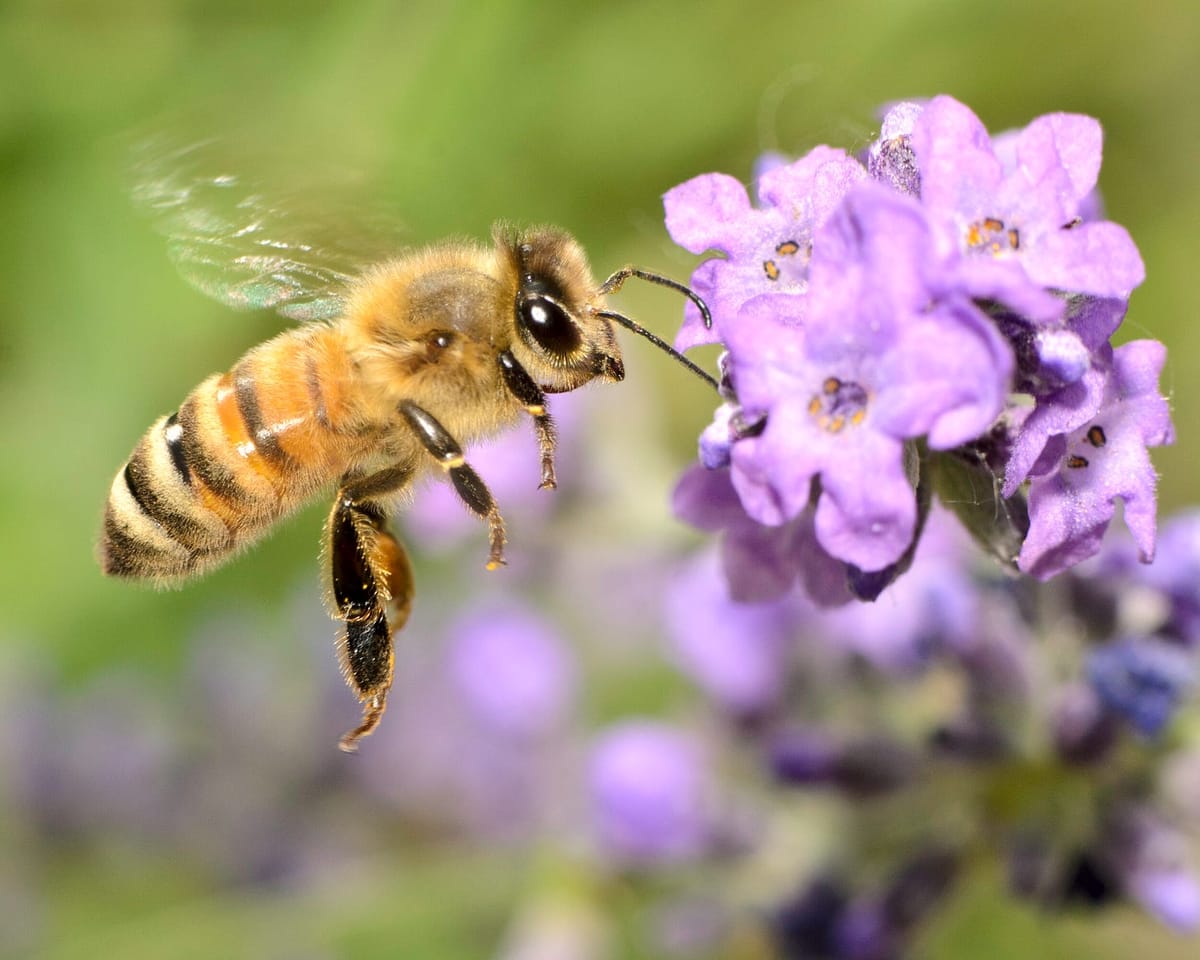Where Have All The Honey Bees Gone (Not-So-Long-Time Passing)?

By Nick Rogers
STATEWIDE - The honey bee population in Ohio is declining rapidly, and the implications are dire. According to the US department of Agriculture, Ohio lost 48% of its honey bee colonies between January and March 2015; another loss of 26% followed for the same period the following year. Scientists are blaming a combination of urbanization, pesticides, herbicides, insecticides, the Varroa Mite, and “climate change,” but another deadly culprit – electromagnetic frequency (EMF) – silently lurks.
According to Reed Johnson of Ohio State’s Department of Entomology, pollinators of all kinds are a vital cog in the production of $500 billion worth of food a year, globally. Bees alone are responsible for pollinating approximately one third of the world’s food supply. These foods include coffee, peaches, almonds, tomatoes, blueberries, and apples, among many others.
Johnson notes that, since 2006, commercial beekeepers in the United States have suffered colony loss at an unprecedented 30% each winter, compared with a “traditional” loss of 10 to 15%. In Ohio, the rusty patched bumble bee was officially added to the endangered species list in 2017.
It takes but a quick look around to see the disturbing lack of bees and butterflies in the Northeast Ohio region. This author has a garden, and never are there more than one or two bees present at a time. A friend of this author has said that only 50% of her cucumber plants are currently pollinated, and we find ourselves well into the growing season.
There is no argument about the legitimacy of the above reasons for Ohio’s – and the world’s – honey bee decline (also known as Colony Collapse Disorder or CCD). There is, however, a quickly expanding body of evidence within the scientific literature pointing the finger at an exponentially growing explanation; that of man-made EMFs in the form of cell towers, cell phones, and other Smart grid infrastructure.
Standards for EMF safety limits have been issued by the Federal Communications Commission (FCC) in the United States and the International Commission on Non-Ionizing Radiation Protection (ICNIRP) in Europe. These standards, while arguably grossly insufficient for protecting humans, do not even take into account EMFs’ effects on other inhabitants of the biosphere; namely pollinating animals.
A study carried out by the Swiss Federal Institute for technology found that EMFs (in this case those from a cell phone) caused massive disorientation in honey bees; so much so that they often just simply died. The honey bees in the study made ten times the amount of noise than normal when a nearby cell phone was making or receiving a call, causing massive panic and confusion.
Alain Thill, author of another study, gave a list of EMFs’ negative effects on bees, including “…disturbance of the sense of orientation, reduced reproductive ability and fertility, lethargy, changes in flight dynamics, failure to find food, reduced reaction speeds, escape behavior, disturbance of the circadian rhythm, blocking of the respiratory chain and damage to mitochondria, misactivation of the immune system, [and] increased number of DNA strand breaks.”
Bees use magnetoreception to navigate to and from their hives. These mechanisms are finely tuned to the Earth’s magnetic field, and so it stands to reason that introducing artificial electromagnetic frequencies would wreak havoc on these systems. It seems reasonable, then, to acknowledge the correlation between the exponential rollout of our nation’s cellular infrastructure (beginning in 1996) and the precipitous decline in bees in Ohio and beyond.
With higher, more powerful, beam-forming 5G frequencies now active, scientists are finding that bees – with their small stature and extreme sensitivity to magnetism – are absorbing these frequencies at a worryingly high rate.
Unlike humans, bees (and other animals like amphibians) do not thermoregulate well, meaning that non-ionizing radiation can quickly cause overheating, leading to reproductive problems and death. These EMFs are not always at a high intensity, either, but this matters not. Scientists are finding that prolonged exposure to low intensity EMFs from power lines are also causing big problems for these creatures.
A 2022 meta-analysis of EMFs’ effects on wildlife by B. Blake Levitt et. all states, “The true trans-species biological realities of today's exposures are enormously difficult to quantify, given the inherent variables of species differences, macro and microclimate adaptations, mating/migration patterns, and vastly different environments – e.g., aerial, ground-based, and aquatic – all with unique species-specific adaptions and electromagnetic receptor mechanisms. New methodological approaches that take the lowest exposures at ecosystem levels into consideration are needed.”
We may be running out of time to consider these “methodological approaches.” Bees and other insects have thrived for millennia without the intervention of man-made wireless technology, but it’s only taken a few decades to decimate their numbers. The authors of the meta-analysis add, “Since technology changes so fast, no evolutionary adaptation is possible.”
While EMFs are not solely to blame for CCD in Ohio, there is clearly a synergistic toxicity at play. The subject demands a critical and immediate exploration as we approach the precipice of the planned “Smart” society in Ohio and the world at large. With more and more wireless hotspots, smart meters and towers activated, greater negative effects on pollinator populations will likely follow.
Short of getting rid of cell phones altogether, we must analyze – and begin to quantify – how much more EMF bombardment our pollinator friends can take. Correlation, in this regard, is turning into clear causation, and it appears that our regulatory agencies are, as usual, apathetic to this ongoing – and worsening – biological disaster. Our decision, as individuals, to embrace or reject new wireless technologies could directly relate to how much more infrastructure Big Telecom decides to unveil.
As Albert Einstein supposedly once said, “If the bee disappeared off the surface of the globe, then man would have only four years of life left. No more bees, no more pollination, no more plants, no more animals, no more man.” Hopefully we can all address this existential crisis before the prescience of the above quote is put to the test.




